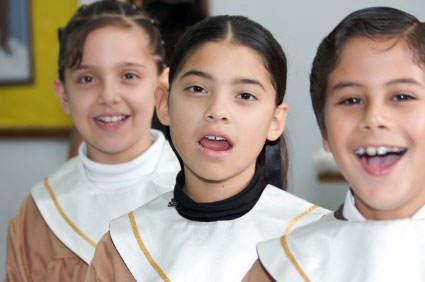All musicians need to warm up before a performance or a rehearsal. Playing a musical instrument is a demanding physical activity that places quite a bit of stress on the parts of our bodies that we use to play. Pianists and string players do warm-up exercises so that their hands, wrists, and fingers are nimble and ready to play. Woodwind and brass players do breathing exercises and lip warm-ups to find the best tone and warm up both themselves and their instruments. For singers, warming up is much more important than for other musicians. A singer’s instrument is his own body. For a vocalist, warming up is the equivalent of a trumpet player greasing and oiling his valves, or a string player applying rosin to his bow. A good warm-up will ensure that your vocal chords (the vocal folds located on the larynx) are supple and ready to make beautiful sounds.

Having a healthy singing apparatus is the main reason why it is important to warm up, but there are other ways in which warming up helps singers. Being creative when warming up can give new purpose into something that is usually a pretty boring physical activity. Warming up does not need to be repetitive; a creative singer can use warm-up time to improve other key aspects of his singing. Teachers and instructors can take advantage of vocal warm-up sessions to strengthen singing technique, especially skills that will then be used in the musical works the singer or choir is working on. If the group has trouble achieving a change in volume, or a certain articulation, these can be integrated into the different warm-up exercises to help drill these technical skills. Warm-ups can also help widen a singer’s range and, if done in a way that is also musically expressive, can help groups achieve part singing that is more balanced and in tune or help a singer practice legato and producing a beautiful tone.
Vocal warm-ups also serve an important psychological and emotional role in preparing for a performance. If the warm-up is done with a positive attitude, it can boost the choir’s self confidence and give them a better attitude for going out on stage. A positive warm-up is also a great way to pump a group up, giving them a sense of teamwork and a group identity that is very important for effective ensemble work. A good warm-up session is also a way to transition from the worries of daily life into a state of musical awareness. By warming up, singers can gradually immerse themselves into the music they are about to sing. You can learn more in our choir warmups material available from this website.



